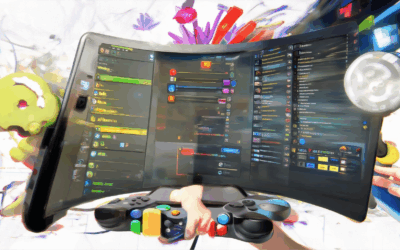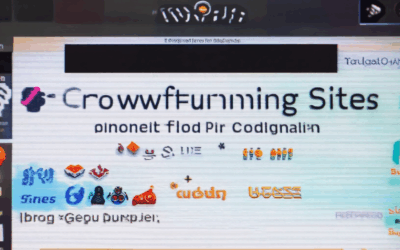With billions of people worldwide playing mobile games every month, the demand for high-quality, engaging mobile games has never been higher. Whether you’re a seasoned game designer or just starting out, mastering the art of game design for mobile platforms is crucial for success in 2023. This article dives into the best practices for designing mobile games, covering everything from understanding the basics of mobile game design to choosing the right tools, monetization strategies, and standing out in a crowded market. By exploring these key areas, we’ll provide you with actionable insights to create games that not only entertain but also thrive in the competitive landscape of mobile gaming. From optimizing your game for different devices to leveraging analytics for continuous improvement, this comprehensive guide will walk you through the essential steps to design a mobile game that captivates players and achieves long-term success.
Key Takeaways
- Cost Considerations: Designing a mobile game varies widely, from $10,000 for simple games to over $500,000 for AAA titles, depending on complexity, development model, platform, and features.
- Profitability: Mobile games are highly lucrative, generating over $100 billion annually with significant revenue from in-app purchases, ads, and premium sales.
- Budget Breakdown: Average budgets range from $25,000 for indie games to over $2 million for AAA titles, influenced by game type, platform, and marketing.
- Statistics: Mobile games account for 40% of global gaming revenue, with 50% of players spending on in-app purchases.
- Opportunity in Competition: Despite major companies, niche genres offer opportunities for indie developers with unique mechanics.
- Success Resources: Utilize tools, marketing strategies, and developer communities to enhance your mobile game’s success.

How to Design a Game in Mobile
To design a successful mobile game, follow these organized steps:
- Choose a Genre : Begin by selecting a genre that aligns with your interests and strengths. Whether it’s puzzle, action, or strategy, understanding the core mechanics will guide your development approach.
- Create a Prototype : Develop a basic version of your game to test ideas. Use sketches or digital tools to visualize gameplay mechanics and gather initial feedback.
- Select a Development Platform :
- Unity : Ideal for both Android and iOS, known for its robust features and extensive support.
- Unreal Engine : Offers high-end graphics and scalability.
- Cocos2d : Great for cross-platform development, including mobile.
- Design User Interface (UI) : Keep the UI simple and intuitive due to limited screen space. Focus on effective touch controls, such as buttons and sliders, to enhance user experience.
- Conduct Testing : Engage beta testers to gather feedback on controls, gameplay, and overall user experience. Iterate based on their input to refine the game.
- Plan Monetization Strategies : Decide between ads, in-app purchases, or a one-time purchase model. Research market trends and audience preferences to choose the most suitable approach.
- Optimize Performance : Optimize graphics and performance to ensure smooth operation across various devices, avoiding lag or crashes.
- Develop Marketing Strategy : Prepare promotional tactics, including social media presence, app store optimization, and influencer partnerships, to maximize visibility.
- Stay Updated with Trends : Keep abreast of current trends in mobile gaming, such as AR, hyper-casual games, or competitive multiplayer experiences, to create standout content.
By systematically addressing each aspect, you can create an engaging and successful mobile game. Start with a clear vision, build incrementally, and refine based on feedback to achieve your goals.
Earning $100 a Day from Ads in Mobile Games
Yes, it is possible to earn $100 a day from ads in mobile games, though it depends on several factors including game genre, ad placement, and audience targeting.
Key Factors Influencing Ad Revenue
- Game Genre: Casual games typically have lower eCPM (effective cost per mille impressions) due to shorter session durations, while mid-core and hardcore games often command higher rates.
- Ad Placement: Banner ads, rewarded videos, and native ads each perform differently. Rewarded videos generally yield higher eCPM due to higher completion rates.
- Audience Targeting: 精准定位广告使得收益更高。通过平台如Google AdMob和Unity Ads,开发者可以根据玩家的兴趣和行为进行定向投放。
- Ad Format Optimization: 优化广告创意和位置可以显著提高收入。例如,使用动态广告和个性化内容以匹配用户行为。
Examples of Successful Mobile Game Ad Strategies
- Banner Ads: 通常每千次显示(CPM)为$0.10到$1之间,具体取决于游戏类型和广告网络。
- _rewarded Videos_: 这些视频广告的完成率较高,通常每千次播放(eCPM)达到$2到$8,适合需要用户互动的游戏类型。
- Native Ads: 与应用程序集成的广告格式通常有较高的点击率和转化率,尤其是在高质量游戏中。
Optimizing Ad Revenue
- A/B测试: 测试不同的广告创意、尺寸和位置,以确定哪种组合带来最高收益。
- 数据分析: 利用工具如Google Analytics和Firebase Analytics跟踪广告表现,并根据数据调整策略。
- 广告网络选择: 选择信誉良好的广告平台,如AdMob、Unity Ads和Vungle,以确保广告效果和支付透明度。
实用建议
- 多样化广告格式: 结合横幅、视频和原生广告,以覆盖更多潜在用户群体。
- 保持广告质量: 高质量的广告创意和设计能够提升用户满意度和点击率,从而增加收入。
- 定期更新: 根据市场趋势和用户反馈,定期更新广告设计和策略,以保持竞争力。
成功案例
许多成功的移动游戏开发者通过有效的广告策略实现了每日收入超过$100。例如,《超级马里奥赛》和《王者荣耀》通过精准的广告投放和优化,获得了稳定的收入来源。
总结
通过合理的广告策略、精准的目标受众和持续的优化,移动游戏开发者完全有可能实现每日$100的收入。关键在于理解用户行为、选择合适的广告格式,并利用先进的广告技术来最大化收益。

What Program is Used to Make Mobile Games?
Mobile games can be developed using various programming environments and frameworks, each catering to different preferences and needs. Below are some of the most popular tools:
Unity
Unity is one of the most widely used platforms for creating mobile games. It offers a powerful engine with intuitive tools, enabling developers to build games for iOS, Android, and other platforms. Unity uses C# scripting, making it accessible to both experienced and new developers.
- Features: Physics simulation, animations, particle effects, and multi-player support.
- Best for: 2D and 3D games, casual and mid-core gaming experiences.
Visit Unity’s Official Website
Unreal Engine
Unreal Engine, known for its high-fidelity graphics and realistic rendering, is another top choice for mobile game development. While primarily used in AAA game development, it’s also suitable for mobile apps and games due to its robust capabilities.
- Features: Advanced 3D rendering, lighting, shadows, and particle systems.
- Best for: High-quality 3D games, simulations, and immersive experiences.
Visit Unreal Engine’s Official Website
Godot Engine
Godot is an open-source game engine known for its ease of use and flexibility. It supports both 2D and 3D game development and is particularly popular among indie developers. Godot uses Python as its default scripting language.
- Features: Scene editing, node-based architecture, and built-in physics.
- Best for: Retro-style games, platformers, and lightweight projects.
Visit Godot Engine’s Official Website
Corona SDK
Corona SDK is another popular framework for mobile game development, known for its simplicity and ease of use. It uses Lua scripting and is optimized for performance, making it ideal for 2D games.
- Features: Lightweight, fast, and easy to learn.
- Best for: Casual games, puzzles, and simple interactive applications.
Visit Corona SDK’s Official Website
PhoneGap
PhoneGap provides a framework for building cross-platform mobile applications, including games. It allows developers to create games using web technologies like HTML, CSS, and JavaScript, making it accessible to a broader audience.
- Features: Cross-platform compatibility, access to device APIs, and seamless updates.
- Best for: Web-based games and hybrid app experiences.
Visit PhoneGap’s Official Website
These tools offer diverse features and cater to different skill levels and project requirements. Whether you prefer 2D, 3D, or web-based development, there’s a game engine that fits your needs.

How Much Does It Cost to Design a Mobile Game?
The cost of designing a mobile game varies widely based on several factors, including the complexity of the game, the size of the development team, and the platform(s) targeted.
Factors Influencing Costs
- Type of Game: – Simple/Casual Games: $10,000 – $50,000 – Complex Games: $100,000 – $500,000+
- Development Model: – Independent Developer: $5,000 – $30,000 – Small Team/Studio: $50,000 – $200,000 – Larger Studio: $500,000 – $2,000,000+
- Platform Considerations: – iOS: Higher costs due to App Store fees and platform restrictions. – Android: Generally lower costs with access to Google Play. – Cross-Platform: Slightly higher costs but broader reach.
- Features and Complexity: – Basic Features: $20,000 – $80,000 – Advanced Features (e.g., 3D Graphics, Multiplayer): $100,000 – $300,000+
- Marketing and Launch: – Basic Marketing: $20,000 – $50,000 – High-Profile Campaign: $100,000 – $500,000+
- Additional Costs: – Testing and QA: $10,000 – $50,000 – Analytics and Maintenance: $10,000 – $50,000/year
For a more detailed breakdown and current pricing estimates, visit our mobile game development cost guide .
Is It Profitable to Make Mobile Games?
Yes, making mobile games can be extremely profitable due to the massive global demand and significant revenue opportunities.
As of recent reports, the mobile gaming market has generated over $100 billion annually, with billions of dollars coming from in-app purchases, ads, and premium purchases. With over 600 million active players worldwide, mobile games offer a vast audience for developers to tap into.
Why Are Mobile Games Profitable?
- High Revenue Potential: Mobile games consistently generate the highest revenue among all game categories, thanks to their accessibility and widespread distribution through app stores.
- Monetization Strategies: Developers can employ various monetization tactics such as in-app purchases (e.g., virtual goods, power-ups), ads (banner and video ads), and premium subscriptions or one-time purchases.
- Global Appeal: Mobile games cater to diverse audiences worldwide, ensuring consistent engagement and revenue generation regardless of geographic location.
- Low Development Costs: Compared to traditional console games, mobile games often require lower upfront investment, allowing smaller studios and indie developers to enter the market successfully.
- Scalability: Mobile games can easily scale across devices and platforms, reaching millions of users with minimal effort once developed.
Key Statistics About Mobile Gaming
Here are some notable figures that highlight the profitability of mobile gaming:
- Over 50% of mobile gamers pay for in-app purchases, contributing significantly to revenue.
- Mobile games account for nearly 40% of total global gaming revenue .
- The average mobile gamer spends over $20 per month on in-game purchases.
Competitive Landscape
While the mobile gaming market is competitive, there are opportunities for new entrants to thrive. Major companies like Tencent, Zynga, and King (now part of Activision Blizzard) dominate the space, but there are niches and genres where indie developers can excel, particularly in unique gameplay mechanics and innovative designs.
Resources for Success
To maximize profitability in mobile gaming, consider leveraging:
- Indie Dev Games Tools : Find the best tools and software for game development.
- Game Marketing Guides : Learn effective strategies to promote your mobile game.
- Developer Communities : Connect with other game developers and gain valuable insights.
By combining creativity with strategic monetization, developers can achieve sustained success in the mobile gaming market. Start your mobile game journey today and join one of the most lucrative industries in entertainment!

What is the Average Budget for a Mobile Game?
Determining the average budget for a mobile game development project involves considering several factors, including the type of game, complexity, development platform, and additional costs like marketing and testing.
Key Factors Influencing Mobile Game Budgets
- Game Type: Simple 2D games typically cost less, ranging from $10,000 to $50,000, while 3D games or complex mechanics may require $100,000 to $500,000 or more.
- Development Platform: Cross-platform development (e.g., Unity, Unreal Engine) can increase costs due to additional tools and licensing fees.
- Art Style and Design: High-quality graphics or custom animations can significantly boost the budget, often adding 30% to 50% to the overall cost.
- Marketing and Testing: Allocating funds for app store optimization (ASO), advertising campaigns, and extensive beta testing can add another 20% to 40% to the total budget.
Average Budget Breakdown by Game Type
- Indie Games: $25,000 – $75,000
- Mid-Tier Games: $50,000 – $200,000
- AAA Titles: $500,000 – $2,000,000+
- Shovelware Games: Less than $10,000
Conclusion
The average budget for a mobile game varies widely based on the project scope and goals. Developers should carefully plan their budgets, prioritizing essential components while allowing flexibility for unexpected challenges during development.




0 Comments